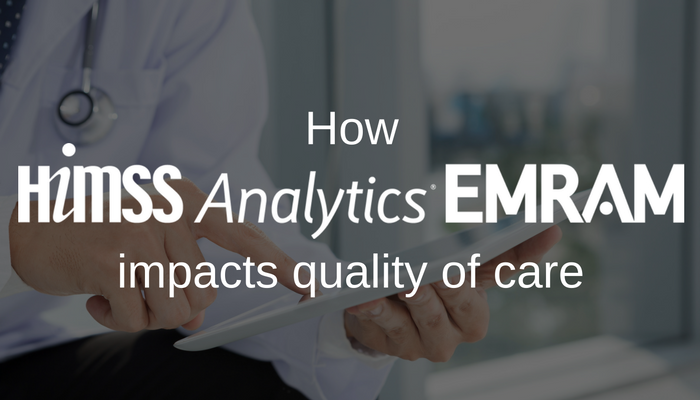Value of EMRAM Part 1: How EMRAM Impacts Quality of Healthcare

When you want to do something well, you have to be able to measure where you are and where you are going. Research shows that technology investments in Healthcare organizations can be as much as 5% of their total operating expense, which means the pressure for HIT implementations to add value is greater than ever. The HIMSS Analytics EMR Adoption Model (EMRAM) provides a clear path and measures an EMR deployment’s impact on systems, providers and patients. This measurement allows healthcare leaders to strategically prioritize their technology goals by comparing their progress to industry best practices.
Achieving an EMRAM Stage 7 has become the capstone of a successful implementation that shows how an organization has turned the idea of paperless healthcare into a reality.
Organizations from all over the world come to HIMSS Analytics for guidance on this model as they look to improve the quality, safety, and efficiency of healthcare. Today let’s look at how quality of care is impacted by maturing through the EMRAM:
EMRAM and quality of care:
When assessing the quality of care provided, many health systems strive for the Triple Aim:
- Better health for populations
- Improved experience for patients
- Lower costs overall.
The EMRAM promotes these fundamental basics of care quality and helps organizations align their goals with improved governance, patient engagement, and interoperability.

Strong Governance
Strong governance that enables continuous process improvement requires adaptability to system enhancements and predictable, identifiable methods by which the voices of clinicians can be heard.
Sustained and coordinated effort supported by strong leadership is required to maximize the value of an electronic ecosystem. An important foundation of the EMRAM is organizational and committee structure. Both must be carefully developed to ensure solid IT service management (i.e. change control, service level agreements, and system capacity) works in lock step with the complex clinical needs faced by healthcare delivery organizations.

Patient Engagement
Patient engagement has also become paramount to the success of healthcare organizations as access to constant real time information and consumer choice in where to receive healthcare is becoming a societal norm. The EMRAM provides a solid roadmap for organizations to understand how to tackle essentials like patient portals and health information management.

Interoperability
Interoperability is perhaps one of the most impactful ways for technology to add value to clinical care and the EMRAM addresses both internal integration of ancillary systems like laboratory and radiology and external exchange of health data between disparate healthcare providers. The standards for health information exchange vary broadly and change constantly. The EMRAM enables organizations the flexibility to engage in either private or public HIEs, and pushes healthcare CIOs to be leaders in the industry by building better clinical integration with referring and admitting medical staff through HIEs.
Higher quality of care outcomes
Addressing the aspects of the Triple Aim with a model built and vetted by healthcare experts to improve governance, patient engagement, and interoperability, the EMRAM lays a framework for organizations to move to a paperless environment that allows for better healthcare outcomes.
This post is part of a multipart series on the value of EMRAM. Continue to follow HIMSS Analytics for more on this topic.
